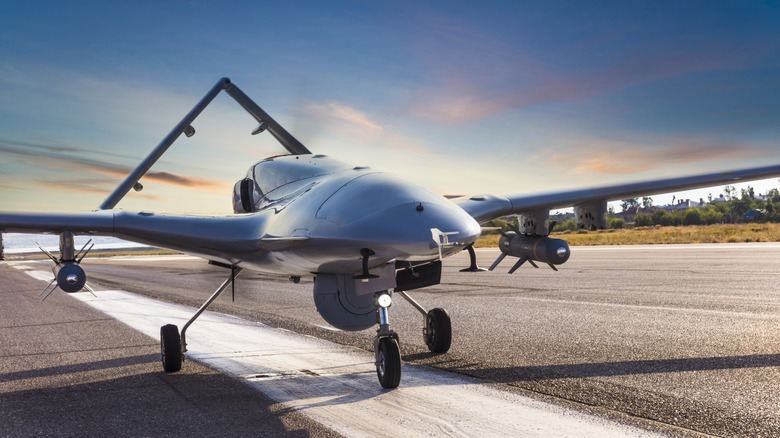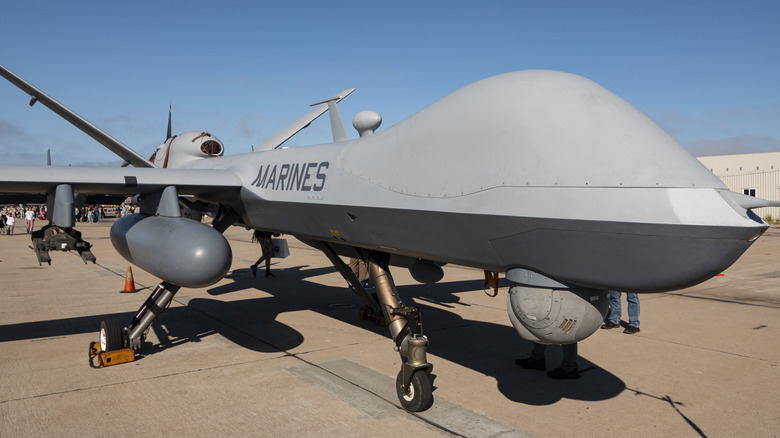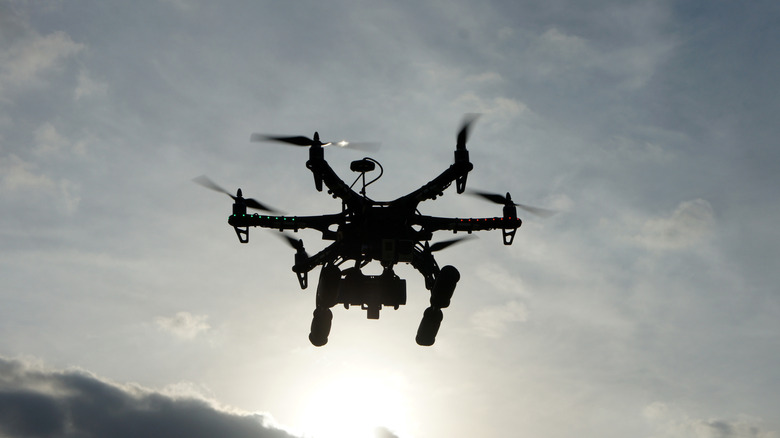Drone Vs. UAV: Is There A Difference Between These Military Aircraft?
Unmanned crafts have been part of the military force for nearly two centuries. The first UAV saw field use in the summer of 1849 when Austria introduced Venice — and the world — to aerial warfare. More than 170 years later, these crafts have solidified themselves as part of every nation's military might. But in recent years, a debate has risen over the difference between drones and UAVs, terms people love using interchangeably, even though the answer is simple: All UAVs are drones, but not all drones are UAVs.
With the surge of technology in the 21st century, meeting someone who hasn't run into an unmanned craft is difficult. You might have heard a person call a state-of-the-art military-grade craft a drone, while also using the same term for a recreational gadget a high school senior uses to capture 4K YouTube videos. Both drones and UAVs have no pilots inside, can be controlled remotely, might have some autonomy, and are subject to regulations set by a country's aviation authority. But similarities between these crafts end here.
What makes up a UAV
A UAV, or unmanned aerial vehicle, is a drone. Confusing, yes. A UAV has most of the characteristics of a drone, like autonomy and/or remote control. While some UAVs can be used recreationally or commercially, most see their use in different groups by the U.S. Armed Forces. These variants, like the MQ-4C Triton, come in many sizes, shapes, and makes, from tiny surveillance drones that can land on a palm to massive fixed-wing drones meant to cover large areas efficiently. Military UAVs carry varied payloads like cameras, sensors, and, in the case of the U.S. Marine Corps drone, the Rogue 1, an explosive interchangeable warhead.
Most military UAVs are usually sophisticated enough to warrant using equally sophisticated systems to monitor and pilot. Enter the Unmanned Aircraft Systems (UAS), which contains the communication equipment, payload, ground control systems, and flight planning software needed to fly the UAV. The UAS is essentially the entire operational system for high-end UAVs, ensuring a military base has complete control of the vehicle while it's off on missions.
While many military forces worldwide use UAVs for missions, they also employ several drones, especially where a UAV would have problems reaching. So, what exactly is a drone?
What makes a drone different than a UAV?
A drone is the unmanned flying vehicle itself, not the entire system that makes up a UAV. As such, drones, like the Parrot ANAFI FPV, do not need additional equipment or unmanned aircraft systems (UAS) to operate. Additionally, they are typically smaller, easier to source and purchase, and have shorter flight times than military/professional-grade UAVs.
While the term drone can be used to cover other unmanned vehicles in military settings, it is often used in everyday conversations to refer to commercial and recreational flying robots that can be remotely controlled. Interestingly enough, the word was widely used in the military context because drones were never meant to be recovered after being sent on missions. As a result, today, you might find some military officials referring to UAVs as drones if they are not intended to return to base, i.e., they fly into their target. Most media and popular culture also use the term drones when referring to UAVs.


